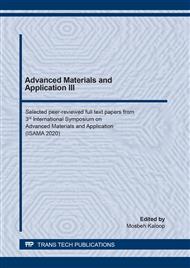p.76
p.85
p.90
p.99
p.105
p.111
p.118
p.125
p.131
Non-Destructive Detection of GIS Aluminum Alloy Shell Weld Based on Oblique Incidence Full Focus Method
Abstract:
In this paper, a new ultrasonic phased array full focus imaging method based on oblique incidence is proposed to solve the problem of the non-destructive testing of the internal defects in the GIS (gas insulated switchgear) shell welds. By using wedge coupling, the measured weld is far away from the near-field range of the transducer, and the detection angle range can be increased by changing the propagation direction of the acoustic beam. Based on Snell's law, the propagation characteristics of the ultrasonic wave in the interface are studied. On the basis of the conventional ultrasonic array matrix and the full focus imaging algorithm, by introducing the energy attenuation calibration coefficient of the acoustic wave propagation through the wedge, the correction amplitude of the specific focus point p(x, z) is obtained, The non-destructive testing of weld defects of GIS shell in the spot is carried out, and the test results show that the qualitative and quantitative detection of the weld defects can be well realized by using this method.
Info:
Periodical:
Pages:
105-110
Citation:
Online since:
August 2020
Authors:
Price:
Сopyright:
© 2020 Trans Tech Publications Ltd. All Rights Reserved
Share:
Citation:


